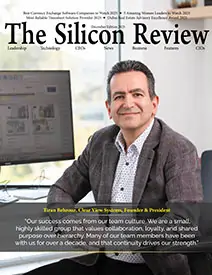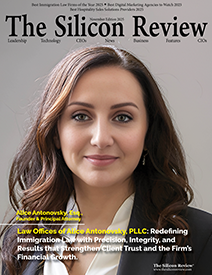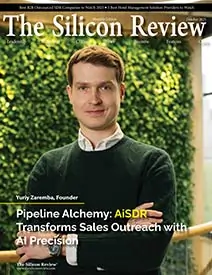Most Admired Companies of the Year 2025
International Fund for Animal Welfare: A Global Vision for Animals, People, and the Place we Call Home
The Silicon Review
![]()
Founded in 1969, the International Fund for Animal Welfare (IFAW) is a global nonprofit organization dedicated to the welfare and conservation of animals as well as the habitats they call home. Operating in over 40 countries, IFAW focuses its work at the intersection of rescue and conservation, combining innovative science, bold action in the field, and advocacy initiatives to drive long-term change. Under the leadership of Azzedine Downes, President and CEO, IFAW has evolved from a collection of independent projects into a unified movement with a clear vision: a world where animals and people thrive together. Downes saw an opportunity to transform the organization from a somewhat disjointed network of talented individuals into a cohesive force for change. His leadership has guided IFAW toward a more strategic approach—one that connects conservation efforts, wildlife rescue, and community engagement to drive sustainable impact.
IFAW’s work spans a broad range of critical issues, from rescuing stranded marine mammals and rehabilitating orphaned wildlife to combating illegal wildlife trade and advocating for stronger environmental policies---to name just a few. The organization’s initiatives recognize the deep connection between people, animals, and the planet, emphasizing that conservation should not be driven solely by the pursuit of economic value but by the intrinsic worth of nature itself and the inherent role it plays in global health and wellbeing. With a strong global presence and a commitment to continuous collaboration, IFAW continues to be a thought leader in the protection of wildlife and in environmental stewardship overall. By fostering partnerships with governments, communities, and fellow conservationists---as well as those who may not share the same opinions with regards to conservation---IFAW strives to create a future where all living beings recognize the fundamental importance of coexistence. Through its bold vision and action-oriented approach, IFAW is not just responding to crises—it is shaping a more sustainable world for generations to come.
In conversation with Azzedine Downes, President and CEO of International Fund for Animal Welfare
Q. In recent years, how has IFAW adapted to the changing landscape of global conservation efforts?
Conservation funding, like so many other fields, tends to be dominated by larger players—organizations that are deeply embedded in government funding, World Bank initiatives, and other major financial sources. There is much discussion around investing in communities, and in a recent conversation, someone pointed out that “everyone is doing that.” My response was simple: If that were truly the case, then why are the people living near national parks and protected areas still struggling with poverty?
Right now, many conservation projects treat community investment as an afterthought—funding small initiatives that amount to little more than the byproducts of a larger conservation agenda. I want to move beyond that. Instead of communities receiving the “leftovers” of conservation projects, we need to make conservation an integral part of broader investments in people, as a whole.
When I spoke with the President of Malawi, I emphasized the following point: If a government is investing in health, education, and infrastructure, those investments should be layered strategically, as opposed to spread evenly across all regions. For example, in areas where ecotourism generates revenue, the priority should be investing in the people who live with wildlife. If they have access to quality education and healthcare, they will be in a stronger position to generate their own income and contribute to the economy in a meaningful way.
The ultimate goal is to create a system where conservation and community development go hand in hand—where people are not just passive recipients of aid but active participants in economic growth. I believe this approach has been largely overlooked in mainstream conservation efforts, and shifting that perspective remains a major challenge. However, I see it as a necessary step toward long-term sustainability and real change.
Q. Could you highlight a few of IFAW’s most impactful projects, and what success have you seen from those initiatives?
Our number one initiative is called Room to Roam, and it’s a revolutionary approach to conservation. Habitat connectivity, the principal cornerstone of Room to Roam, is fundamental for the resilience and stability of species populations. Using savanna elephants as a keystone species for biodiversity conservation, Room to Roam aims to create a network of connected, climate-resilient landscapes across East and Southern Africa. At IFAW, we believe that protecting the planet means protecting biodiversity and investing in the people who live alongside wildlife. It’s not easy though—nothing of this magnitude ultimately is. There are very real challenges, from climate change to human population growth to infrastructure development, all of which shrink the space available for wildlife to thrive. This is why our thinking, and our approach must be greater than the challenges we face.
One of the main criticisms we face is whether IFAW is large enough or influential enough to achieve such an ambitious vision. But what sets us apart is our ability to build strong, trust-based, long-term partnerships with organizations and governments that share our commitment. For it is overwhelmingly clear throughout history that when the environment suffers, its people suffer as well—leading to instability, economic challenges, and even conflict.
We wholeheartedly reject the notion that nature must “pay for itself” to be worth saving. The protection of our home is non-negotiable. Achieving this vision requires faith, collaboration, and engagement with both traditional leaders and policymakers. Ultimately, our work—whether in marine conservation or land-based efforts—centers on one mission: ensuring that animals and people thrive together. That is the reason why our two main pillars, rescue and conservation, must go hand in hand. We rescue individual animals because every individual has value, but we also work to protect the habitats they depend on.
Q. How do you approach fundraising, and what strategies have proven most effective in engaging donors and supporters for wildlife![]() protection?
protection?
Philanthropy is ever evolving, influenced by rapid changes in digital fundraising, AI, and shifting donor expectations. Many donors understandably demand measurable impact and scalability to see the effect of their giving, which mirrors a business mindset. Trust and transparency are crucial in donor relations, which is why I prioritize transparency and honest communication—sharing both successes as well as challenges. Younger generations, early in their careers, are typically less philanthropic, which makes sense as they are in the early stages of building their own lives. While social media amplifies voices, the medium doesn’t always translate into donations. To address this, we focus on two key strategies: nurturing relationships with existing donors while also investing in engaging younger audiences in our mission.
From a business perspective, the return on investment (ROI) in philanthropy is uncertain—will it take two years, ten, or more? The landscape is changing rapidly due to political shifts, societal shift, and yes, even social media influence. This presents both challenges and opportunities for deeper engagement. As proving our impact is essential, tools such as reports, metrics, and basic accountability become especially important to help --- build credibility. Balancing emotional appeal through thoughtful storytelling and combining it with data-driven insights allows us to navigate the evolving philanthropic world effectively.
Q. What does the future hold for your company and its customers? Are exciting things on the way?
Ours is a future that increasingly focuses on the connection to and protection of nature and biodiversity, inspiring hope in a world far too often overwhelmed by bad news. Too often, statistics paint a bleak picture, leaving younger generations feeling powerless or anxious about the future. But we must begin with hope and ensure it never fades.
Another key priority is investing in the development of community traditional leaders. This serves as an influential and respected counterbalance to the bureaucratic approach often favored by government officials. We need to build a movement—one that IFAW is helping lead through thought leadership and action and the empowerment of community and leaders who inspire belief that real change is possible.
We learned in the pandemic that nature has an incredible ability to bounce back. But only if we allow it to. Restoring nature and protecting biodiversity are enormous undertakings, no doubt about it. They require enormous energy and a vision. I was speaking recently to a colleague about engaging the private sector to invest in our work. She mentioned that companies are now beginning to think far beyond five-year plans—some as long as 100-year plans. This completely resonated with me, and I thought that these are the companies that we need to find. Let’s start with 30 years and build from there.
_2025-12-15_12-44-58.webp)


_2025-11-17_06-38-14.webp)

 (1)_2025-10-21_13-35-14.webp)
